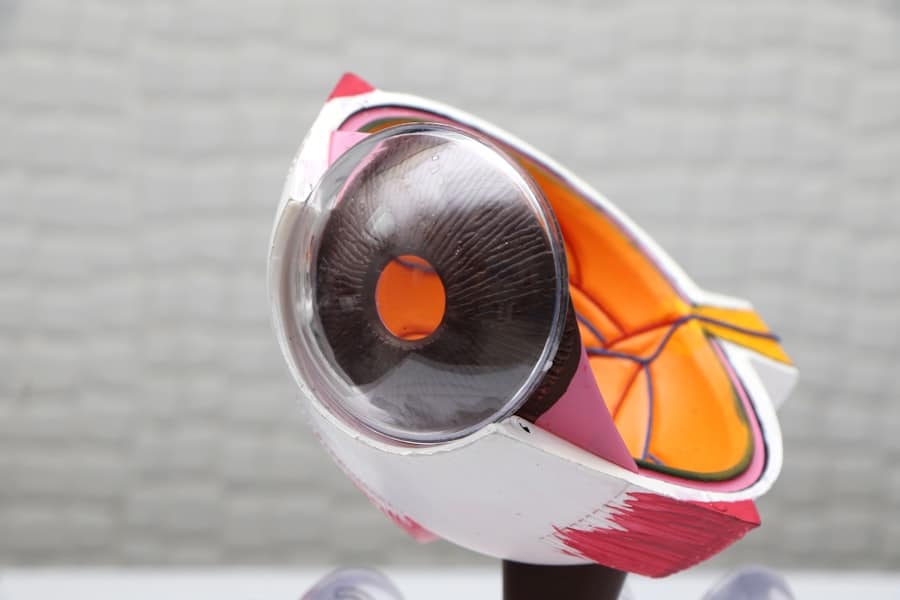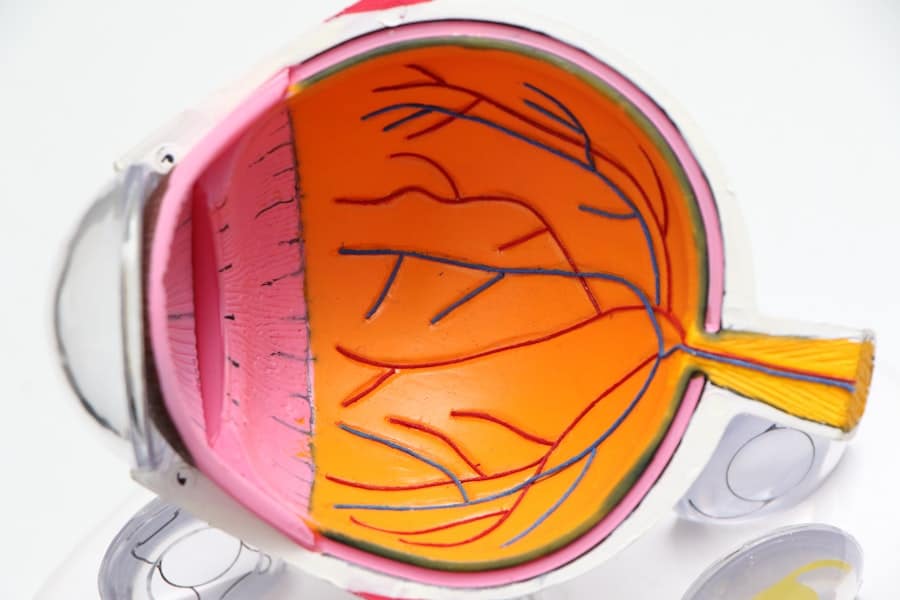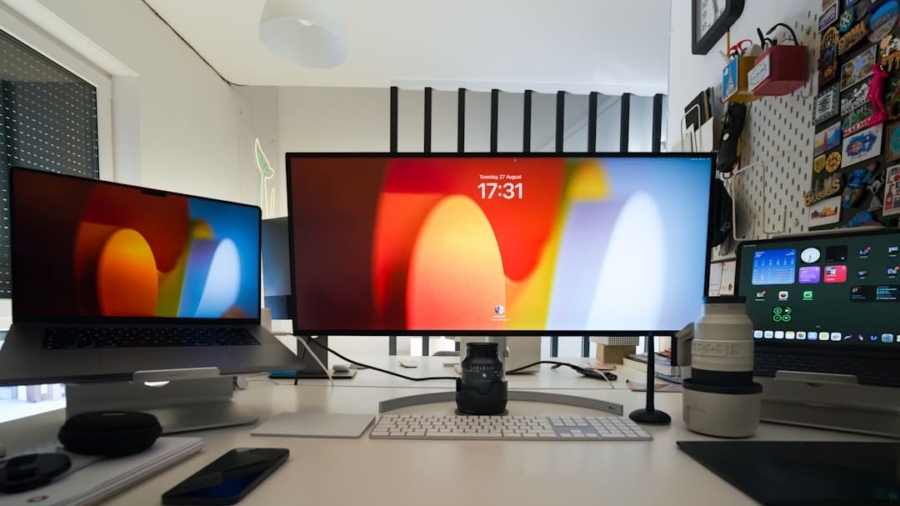Augmented Reality (AR) has emerged as a transformative technology, reshaping how we interact with the digital world. Among the most innovative applications of AR is the development of smart contact lenses, which promise to integrate digital information seamlessly into our field of vision. These lenses are designed to overlay digital content onto the real world, providing users with an immersive experience that enhances their perception and interaction with their environment.
Unlike traditional AR devices, such as headsets or glasses, smart contact lenses offer a more discreet and user-friendly alternative, making them an appealing option for consumers seeking convenience and functionality. The concept of AR-enabled smart contact lenses is not merely a futuristic vision; it is rapidly becoming a reality thanks to advancements in materials science, microelectronics, and display technologies. These lenses are equipped with tiny displays, sensors, and wireless connectivity, allowing them to project images and data directly onto the retina.
This integration of technology into a wearable form factor presents unique opportunities for various sectors, including healthcare, gaming, education, and navigation. As research and development in this field continue to progress, the potential for AR-enabled smart contact lenses to revolutionize our daily lives becomes increasingly tangible.
Key Takeaways
- AR-enabled smart contact lenses are a revolutionary technology that integrates augmented reality into contact lenses, offering a seamless and immersive user experience.
- Advancements in AR technology for contact lenses include the development of ultra-thin, transparent, and biocompatible display components, as well as advanced image processing and wireless connectivity capabilities.
- Potential applications for AR-enabled smart contact lenses range from enhanced vision and real-time information display to medical monitoring and augmented communication.
- Challenges and concerns for AR-enabled smart contact lenses include privacy issues, potential health risks, and the need for robust user interface design and user experience considerations.
- Integration of AR-enabled smart contact lenses with other devices such as smartphones, smartwatches, and IoT devices opens up new possibilities for seamless connectivity and enhanced functionality.
Advancements in AR Technology for Contact Lenses
Miniaturization of Electronic Components
One of the most significant breakthroughs has been in the miniaturization of electronic components. Researchers have successfully developed micro-displays that can fit within the confines of a contact lens while maintaining high resolution and brightness.
Display Technologies
These displays utilize technologies such as liquid crystal displays (LCDs) and organic light-emitting diodes (OLEDs), which are essential for rendering clear images in various lighting conditions.
Interaction and Data Collection
Moreover, the integration of sensors into smart contact lenses has opened new avenues for interaction and data collection. For instance, eye-tracking technology allows the lenses to respond to the user’s gaze, enabling hands-free control of digital content. This capability is particularly beneficial in applications such as navigation, where users can receive directions simply by looking at specific points in their environment. Additionally, advancements in battery technology have led to the development of ultra-thin power sources that can be embedded within the lens structure, ensuring that these devices remain lightweight and comfortable for prolonged wear.
Potential Applications for AR-Enabled Smart Contact Lenses

The potential applications for AR-enabled smart contact lenses are vast and varied, spanning multiple industries and enhancing numerous aspects of daily life. In healthcare, these lenses could revolutionize patient monitoring and surgical procedures. For example, surgeons could benefit from real-time data overlays during operations, allowing them to visualize critical information such as patient vitals or anatomical structures without diverting their attention from the surgical field.
Furthermore, these lenses could assist individuals with visual impairments by providing augmented visual cues that enhance their ability to navigate their surroundings. In the realm of entertainment and gaming, AR-enabled smart contact lenses could create immersive experiences that blur the lines between reality and digital content. Gamers could engage in location-based games where virtual characters interact with the real world, all viewed through their lenses.
This level of immersion could also extend to social media platforms, where users share experiences enhanced by digital overlays that reflect their interests or preferences. Additionally, educational applications could leverage these lenses to provide interactive learning experiences, allowing students to visualize complex concepts in real-time as they engage with physical objects.
Challenges and Concerns for AR-Enabled Smart Contact Lenses
Despite the promising potential of AR-enabled smart contact lenses, several challenges and concerns must be addressed before widespread adoption can occur. One significant issue is the technical challenge of ensuring comfort and safety for users. The integration of electronic components into a device that sits directly on the eye raises questions about biocompatibility and long-term wearability.
Researchers must ensure that materials used in these lenses do not cause irritation or adverse reactions over extended periods. Privacy concerns also loom large in discussions about AR-enabled smart contact lenses. The ability to capture images or data from a user’s perspective raises ethical questions about surveillance and consent.
If these lenses are equipped with cameras or recording capabilities, there is potential for misuse in public spaces, leading to violations of privacy rights. Developers must implement robust security measures to protect user data and establish clear guidelines regarding consent and data usage to alleviate these concerns.
Integration of AR-Enabled Smart Contact Lenses with Other Devices
The integration of AR-enabled smart contact lenses with other devices represents a significant opportunity for enhancing user experience and functionality. For instance, pairing these lenses with smartphones or wearable devices can create a cohesive ecosystem that allows users to access information seamlessly. Notifications from smartphones could be displayed directly within the user’s field of vision, enabling them to stay connected without needing to check their devices constantly.
Imagine adjusting lighting or temperature settings just by looking at specific areas within a room. This level of interconnectivity not only enhances convenience but also promotes a more intuitive interaction with technology.
As developers explore ways to create synergies between AR-enabled smart contact lenses and other devices, the potential for creating a fully integrated digital lifestyle becomes increasingly feasible.
Regulatory and Ethical Considerations for AR-Enabled Smart Contact Lenses

Safety Standards and Consumer Protection
Regulatory bodies must establish guidelines that guarantee these devices meet rigorous safety standards while protecting consumer rights. This includes thorough testing for biocompatibility, functionality, and long-term effects on eye health.
Data Privacy and Security
Manufacturers must navigate complex regulations surrounding data privacy and security, particularly if these devices collect sensitive information about users’ behaviors or environments. This is crucial to prevent potential misuse of user data.
Inclusivity and Accessibility
Ethical considerations also extend to issues of accessibility and equity. Developers should prioritize inclusivity in design and functionality to ensure that AR-enabled smart contact lenses are accessible to diverse populations, including those with disabilities or limited financial resources.
Consumer Adoption and Market Potential for AR-Enabled Smart Contact Lenses
The market potential for AR-enabled smart contact lenses is substantial, driven by increasing consumer interest in wearable technology and augmented reality experiences. As consumers become more accustomed to integrating technology into their daily lives through smartphones and wearables, there is a growing appetite for innovative solutions that enhance convenience and functionality. Market research indicates that the global augmented reality market is expected to grow significantly over the next decade, with smart contact lenses poised to capture a share of this expanding market.
However, consumer adoption will depend on several factors beyond mere technological capability. Price points will play a critical role; if these lenses are prohibitively expensive, widespread adoption may be limited to niche markets or affluent consumers. Additionally, effective marketing strategies will be essential in educating potential users about the benefits and functionalities of AR-enabled smart contact lenses.
Building trust through transparent communication about safety, privacy measures, and user experience will be crucial in fostering consumer confidence in this innovative technology.
The Future Outlook for AR-Enabled Smart Contact Lenses
The future outlook for AR-enabled smart contact lenses is promising yet complex. As technological advancements continue to unfold, these devices have the potential to redefine how we interact with both our physical environment and digital content. The convergence of miniaturized electronics, advanced materials science, and user-centric design will likely lead to increasingly sophisticated products that cater to diverse consumer needs.
However, realizing this potential will require addressing significant challenges related to safety, privacy, regulatory compliance, and ethical considerations. Stakeholders across industries must collaborate to create frameworks that promote responsible innovation while ensuring accessibility for all users. As we stand on the brink of this technological revolution, it is clear that AR-enabled smart contact lenses could play a pivotal role in shaping our future interactions with technology and the world around us.
The future of AR-enabled smart contact lenses for daily use is an exciting development in wearable technology. As we look ahead to the possibilities of this innovative technology, it’s important to consider how it may impact our daily lives. One related article that delves into the top trends on Instagram for 2023 could provide insight into how AR-enabled smart contact lenses may shape the way we interact with social media platforms in the future. To read more about this topic, check out

